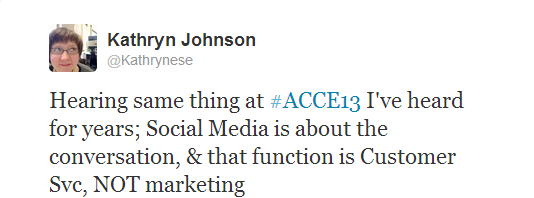Average handle time, or AHT, is an important metric in contact centers.
It measures the average length of a call. Many contact center leaders track AHT closely because shaving even a few seconds off the average call could allow the contact center to handle more volume without adding staff.
A Customer Service Tip of the Week subscriber recently wrote to ask my advice on reducing AHT in his contact center. I shared one simple trick that can produce immediate results.
It's a trick that I discovered more than 20 years ago while running experiments on AHT reduction. The results initially surprised me, but the more I looked at them, the more it all made sense.
The AHT Experiment
We started by gathering a sample of 20 contact center agents. The agents represented multiple shifts (we operated 24/7) and multiple performance levels.
For two weeks, the agents participated in a series of experiments to see if we could find a way to reduce AHT. One of those experiments revealed an unexpected solution.
Agents were asked to forget about AHT entirely. Instead, agents were asked to focus on the needs of each caller, one caller at a time. This meant that some callers needed extra assistance, and that was okay. Other callers were in a hurry, so it was okay to speed things up.
Two things happened at the end of the experiment
Variability increased. The length of individual calls varied more widely than before.
AHT decreased. The average length of calls went down.
One agent, Bev, surprised me the most. She was an otherwise great agent whose customers loved her, but Bev always struggled to meet the AHT standard.
Even Bev's AHT improved!
How did we lower AHT?
I spent time debriefing with agents and discovered a counterintuitive insight. The AHT goal itself was the root cause of higher AHT!
That's because agents tend to view an AHT goal as a target, not an average.
On long calls, agents would get anxious when the call time approached the AHT standard. This anxiety eroded listening skills and caused agents to become less friendly. Those issues made it more difficult to guide customers through issues that naturally required more time.
On short calls, agents became too relaxed. If a call was wrapping up well short of the AHT standard, agents would take their time. This made the call go longer than it needed to be, which drove up their average.
Agent stopped doing all that during the experiment.
That's why the calls became much more variable. Agents would spend the time they needed to guide a customer through a difficult issue. They would focus on quickly helping a customer if the customer had a simple issue or was in a hurry.
Now, here's the weird thing. I later ran similar experiments with contact centers that didn't hold their agents to an AHT goal, but did share the AHT stats with agents.
The same issue occurred there, even without the goal. Agents looked at the average as a target.
How to decrease AHT today
The secret to lowering AHT today is to ask your agents to stop thinking about AHT. Remove it from their scorecard and get rid of any reports or displays that remind them of an AHT target.
Instead, ask your agents to focus on helping each customer as efficiently as possible.
You don't have to take my word for it. Try running the experiment yourself and note what happens. You can even separate your contact center into two teams, a test and a control group, so you can compare the results of your own experiment.
Additional Resources
Here are a few additional resources that can help you reduce AHT even more.











